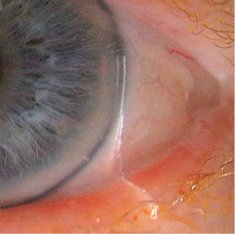Why are eyes with wet surfaces diagnosed as dry-eyes?


The characteristic feature of the non-dry «dry eye» complex is a discrepancy: the patient complains about dry eyes, and the doctor observes «wet» eyes. In other words, symptoms and signs oppose each other diametrically. The reason for this paradox is the response of the sensory nerves belonging to the protective system of the external eye: The conjunctiva, the lid margins and the lashes. These seem to be perceived as an entity and wherever this protective entity is stimulated the sensation is localized «at the eye». The signal transmitted by these nerves is always a tactile sensation, and whatever the cause of their stimulation, the sensation is «foreign bodies».